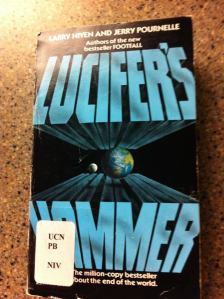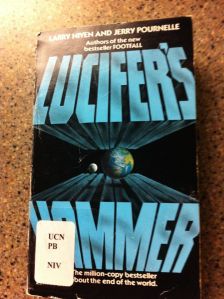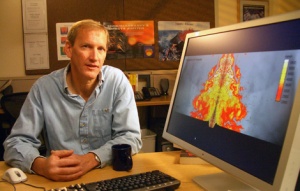


 While I don’t read as much science fiction today as I once did, recalling what I did read more than 40 years ago reminded me today how much of it at the time was read on intercity buses.
While I don’t read as much science fiction today as I once did, recalling what I did read more than 40 years ago reminded me today how much of it at the time was read on intercity buses.
Time travel was just one topic within one genre of my reading interests back then. I have become a fan in more recent years of perhaps more post-apocalyptic dystopian sci-fi, such as New York City writer Emily St. John Mandel’s 2014 post-apocalyptic Station Eleven, centered around the fictional but not so implausible in the-world-after-SARS (severe acute respiratory syndrome) in 2003 and the H1N1 influenza pandemic of 2009 “Georgia Flu,” a flu pandemic so lethal and named after the former Soviet republic that, within weeks, most of the world’s population has been killed. Station Eleven, which was a finalist for a National Book Award and the PEN/Faulkner Award, won the 2015 Arthur C. Clarke Award for best science fiction novel of the year for the British Columbia-born writer. It all begins when the character of 51-year-old Arthur Leander has a fatal heart attack while on stage performing the role of King Lear at Toronto’s Elgin Theatre.
As the novel picks up some 20 years later, “there is no more Toronto,” Sigrid Nunezsept noted in the Sept. 12, 2104 New York Times book review “Shakespeare for Survivors.” In fact, “There is no Canada, no United States. All countries and borders have vanished. There remain only scattered small towns.”
Airplanes are permanently grounded and used as cold storage facilities. There are no hospitals or clinics.
But there is the “Travelling Symphony” made up of “20 or so musicians and actors in horse-drawn wagons who roam from town to town in an area around the shores of Lakes Huron and Michigan,” Nunezsept writes. “At each stop the Symphony entertains the public with concerts and theatrical performances – mostly Shakespeare because, as the troupe has learned, this is what audiences prefer.”
There are limits, however, to my fandom for post-apocalyptic dystopian science fiction in popular culture, whether it is in a visual or written context. When Black Mirror was first aired on Netflix, I found it dark but cleverly well written. Now, I find virtually everything on Netflix dystopian, and not all of it well written. For that matter, I find much of CNN and even The Guardian real-life dystopian. Thanks for that Donald John Trump and the global COVID-19 pandemic rapidly closing in on the three-year mark.
I read Lucifer’s Hammer by Jerry Pournrelle and Larry Niven in a paperback edition much like the one shown here is shortly after it was published in 1977, while I was a student at Trent University on a late fall three-hour one-way trip on an old Voyageur Colonial Bus down Highway 7 and back from Peterborough to Ottawa and back to Peterborough weekend trip. It was nominated for the Hugo Award for Best Novel in 1978.
Wikipedia summarizes the plot this way:
“When wealthy amateur astronomer Tim Hamner co-discovers a new comet, named Hamner-Brown for its discoverers, documentary producer Harvey Randall persuades Hamner to have his soap company sponsor a television documentary series on the comet. Political lobbying by California Senator Arthur Jellison eventually gets a joint Apollo-Soyuz (docking with Skylab B) mission approved to study the comet, dubbed “The Hammer” by the media, which is expected to pass close to the Earth.
‘The scientific community assures the public that a collision with Earth is extremely unlikely, but the comet’s nucleus breaks apart and the pieces strike parts of Europe, Africa, the Gulf of Mexico, and the Pacific and Atlantic Oceans. These result in volcano eruptions, earthquakes and tsunamis, destroying major coastal cities around the world, killing billions and initiating a new ice because of the massive quantities of water and debris flung into the atmosphere.
‘Immediately after the strike, China, anticipating that the Soviet Union become too cold for its people and must therefore invade its neighbor, launches a preemptive nuclear attack on its neighbor. The Soviets retaliate with their own nuclear missiles, reassuring the United States that it is not the target.”
So, a 1977 plot, not so far from today’s real-life headlines.
After 10 months flying in space, NASA’s Double Asteroid Redirection Test (DART) – the world’s first planetary defense technology demonstration – successfully impacted its asteroid target less than a month ago on Sept. 26, the agency’s first attempt to move an asteroid in space.
Mission control at the Johns Hopkins Applied Physics Laboratory (APL) in Laurel, Maryland, announced the successful impact at 7:14 p.m. EDT.
“As a part of NASA’s overall planetary defense strategy, DART’s impact with the asteroid Dimorphos demonstrates a viable mitigation technique for protecting the planet from an Earth-bound asteroid or comet, if one were discovered,” the agency said.
Pournelle, who died in 2017, was born in Shreveport in Caddo Parish, Louisiana. He was a polymath: a scientist in the area of operations research and human factors research, science fiction writer, essayist, journalist, and one of the first bloggers. While Pournelle was great at writing or co-writing page-turners like Lucifer’s Hammer, he is also known as the first writer to sit and compose at a typewriter connected to a television screen, forerunner of today’s desktop computer, to compose, edit, and revise there, and then to send copy to his publisher. Jerry was an early adopter.
Sometimes science and science fiction mingle easily enough in my mind.
Looking at images from the James Webb Space Telescope capturing highly detailed snapshots of the iconic Pillars of Creation within the Eagle Nebula, about 6,500 light-years from Earth, which show a vista of three looming towers made of interstellar dust and gas that’s speckled with newly formed stars, is remarkable, but the name Pillars of Creation immediately took me back in my mind to a another intercity bus ride; this one a Greyhound bus ride out of Blaine, Washington in the United States’ Pacific Northwest in the Summer of 1979, where I was reading Arthur C. Clarke’s brilliant 1953 science fiction novel Childhood’s End where Rashaverak, an Overlord, refers to “Sideneus 4 and the Pillars of the Dawn.”
Aside from reading Childhood’s End on that bus trip, I remember having to changes buses in Spokane, Washington and being awoke in the middle of the night, with my body draped rather uncomfortably across several very hard plastic seats on the second floor of the bus terminal, as Washington State troopers made a gunpoint arrest of a man opening a rental locker on the mezzanine below.
While I’m not sure how much of Ursula K. Le Guin’s 1971 science fiction novel The Lathe of Heaven was read on a bus (perhaps some of it was on the old Trent Express run from downtown Peterborough to Trent’s Nassau Campus), the book left a big impression on me in the late 1970s.
I still remember reading, “Dr. William Haber’s office did not have a view of Mount Hood. It was an interior Efficiency Suite on the sixty-third floor of Willamette East Tower in Portland, Oregon and didn’t have a view of anything. But on one of the windowless walls was a big photographic mural of Mount Hood, and at this Dr. Haber gazed while intercommunicating with his receptionist.
“That doesn’t last long. Mount Hood is the very first thing that we see transformed by George’s power: it gets changed into a horse. And that’s just the first of its transformations.
“Later, when he’s become more powerful and famous, Haber gets a beautiful view of Mount Hood through a fancy window instead of just a picture. When the alien invasion begins, Mt. Hood wakes up and spouts fire that burns the surrounding forest. It’s not until George stops Dr. Haber’s dream that the mountain goes to sleep again.”
You can also follow me on Twitter at: https://twitter.com/jwbarker22

